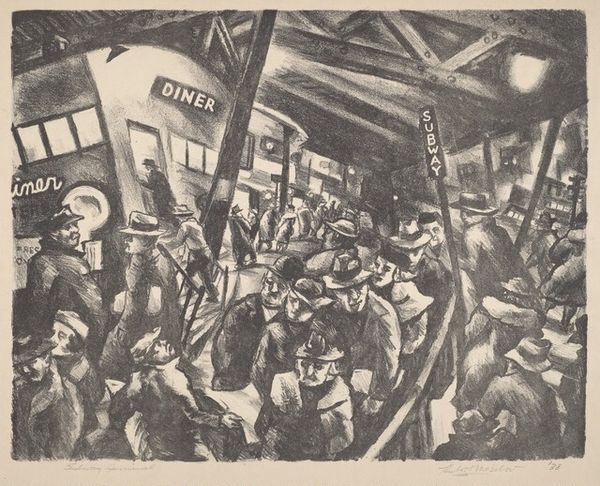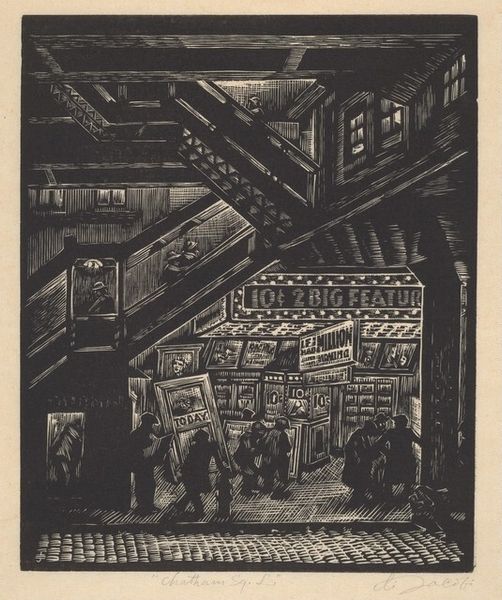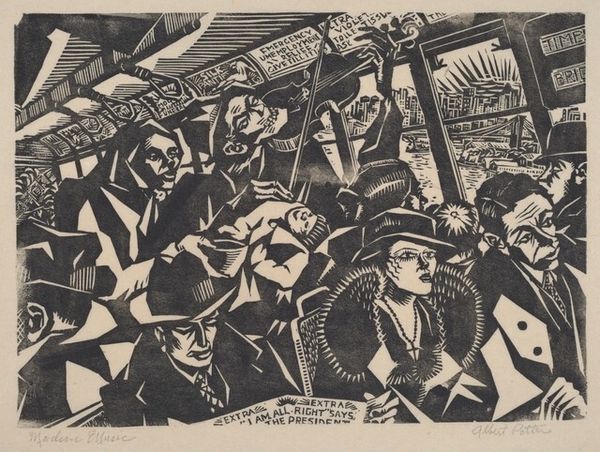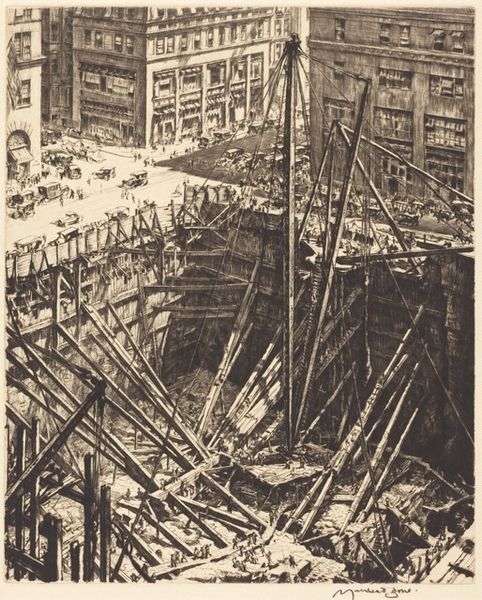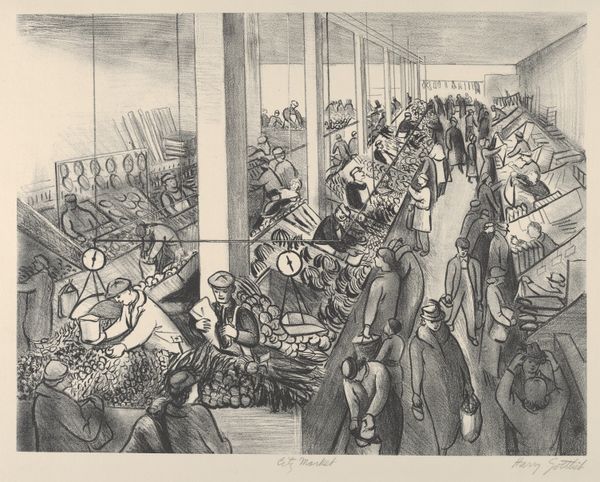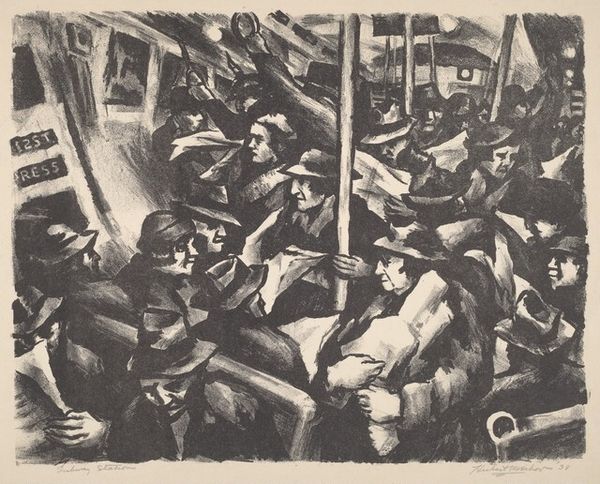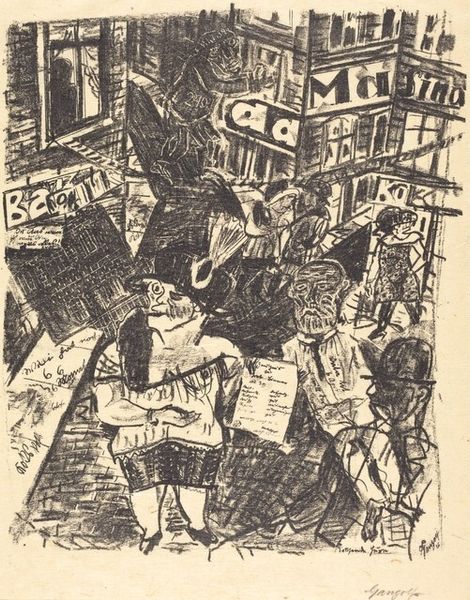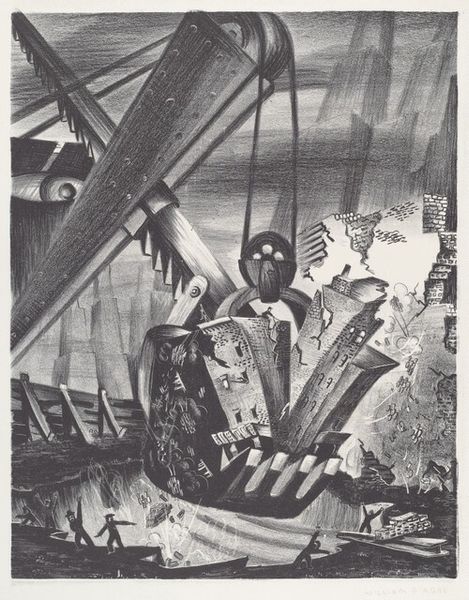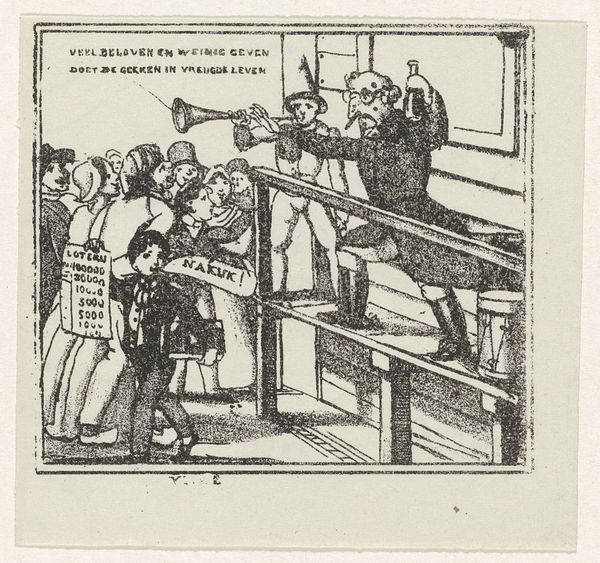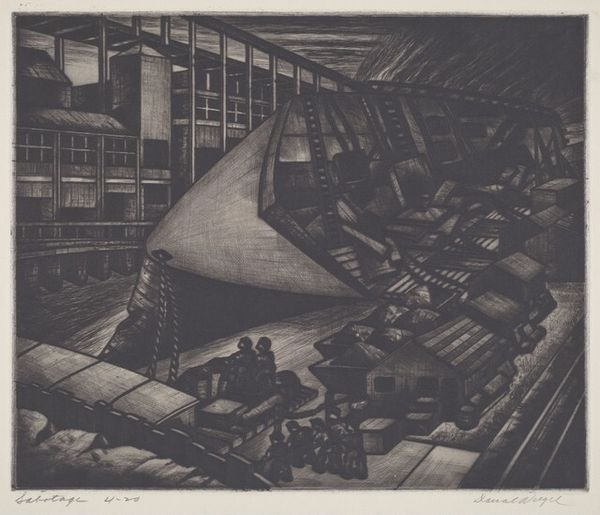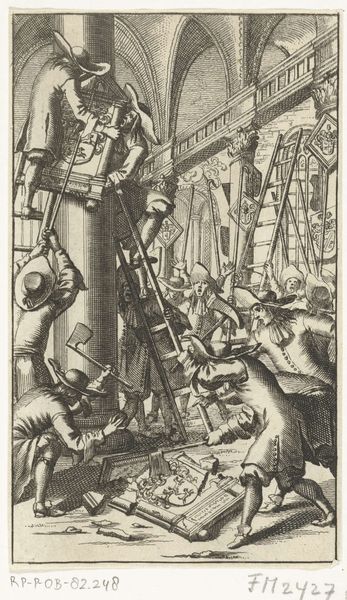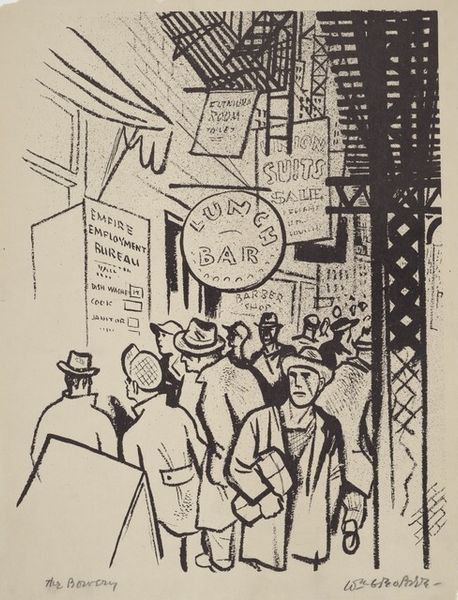
graphic-art, print, etching
#
graphic-art
#
narrative-art
# print
#
etching
#
social-realism
#
cityscape
#
modernism
#
realism
Dimensions: Image: 450 x 298 mm Sheet: 546 x 380 mm
Copyright: National Gallery of Art: CC0 1.0
Curator: This print, titled "Underground," was created by Letterio Calapai between 1945 and 1946. It’s an etching, a type of graphic art that allows for very fine lines and detail. Editor: My immediate reaction is claustrophobia. The converging lines, the figures pressed together – it feels like a pressure cooker. The monochrome palette adds to that intensity. Curator: Absolutely. Consider the symbols. The train itself, emerging from the darkness, hints at a journey, perhaps a quest for something beyond the immediate urban struggle. And then, there's the Times Square station sign itself, acting almost like an otherworldly threshold. Editor: It's powerful social commentary, right? The upward-pointing "Uptown" sign underscores the literal climb out of the depths and implies aspirations for something more. There's a clear class element at play, and the struggle of everyday laborers seems quite apparent. Curator: The composition directs our gaze in several directions simultaneously—some people rise above via the stairs to a different, presumably better situation, some are getting packed together on the trains. Calapai’s vision definitely depicts the psychological realities of urban existence, even the hopes of people getting somewhere better on the one hand versus those stuck where they are on the other hand. Editor: And you notice that the city architecture almost blends into, or even entraps the figures in the lower section? It creates this overwhelming sense of system designed to control every moment in the working class bodies. It seems very critical and realistic in depicting social problems in that time. Curator: Indeed. There is a definite interplay between the sharp angles and dynamic movement. It gives a slightly unreal, and yet intensely vivid emotional expression for the average person in that environment. It calls forth questions of modernity, dehumanization, labor, and progress as those concepts come to inhabit human lives in the postwar era. Editor: I completely agree. Thinking about it through a modern lens, this work prompts so much discussion about labor, class, and social mobility. Even the most immediate aspects, such as people squeezed together in crowded places, carry the weight of social structure in this historical print. Curator: The way that even simple signs can become these emblems of social awareness within the overall urban landscape is remarkable. I see echoes of traditions ranging from Renaissance-style perspective, to modern social expressionism here. Editor: It’s a reminder that art doesn't exist in a vacuum but reflects, critiques, and sometimes anticipates the cultural shifts around it. What felt intensely true then continues to ignite discussion and perhaps inform social struggles now.
Comments
No comments
Be the first to comment and join the conversation on the ultimate creative platform.
